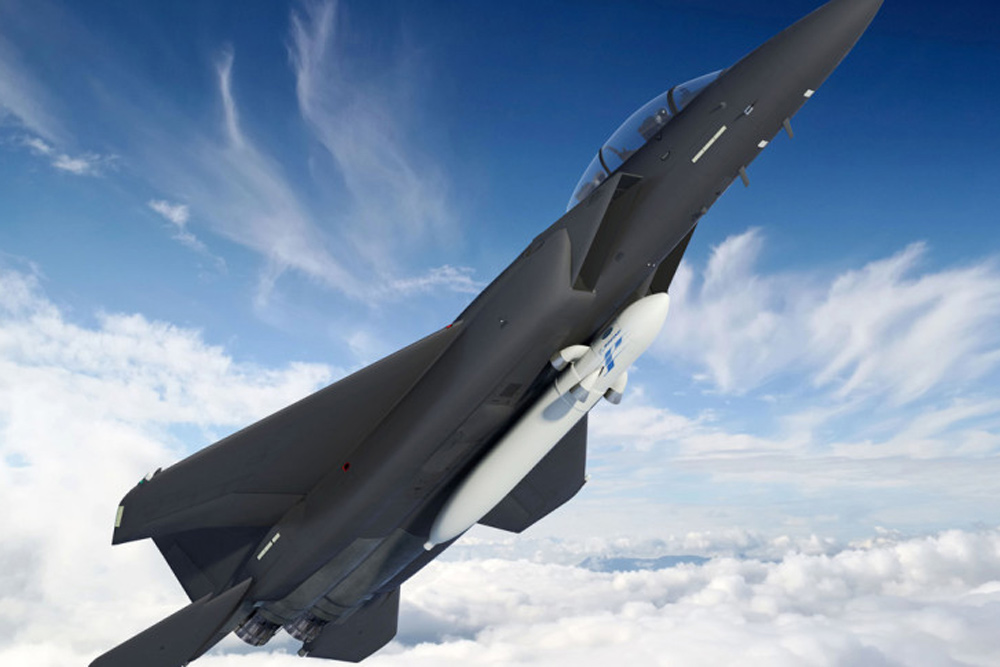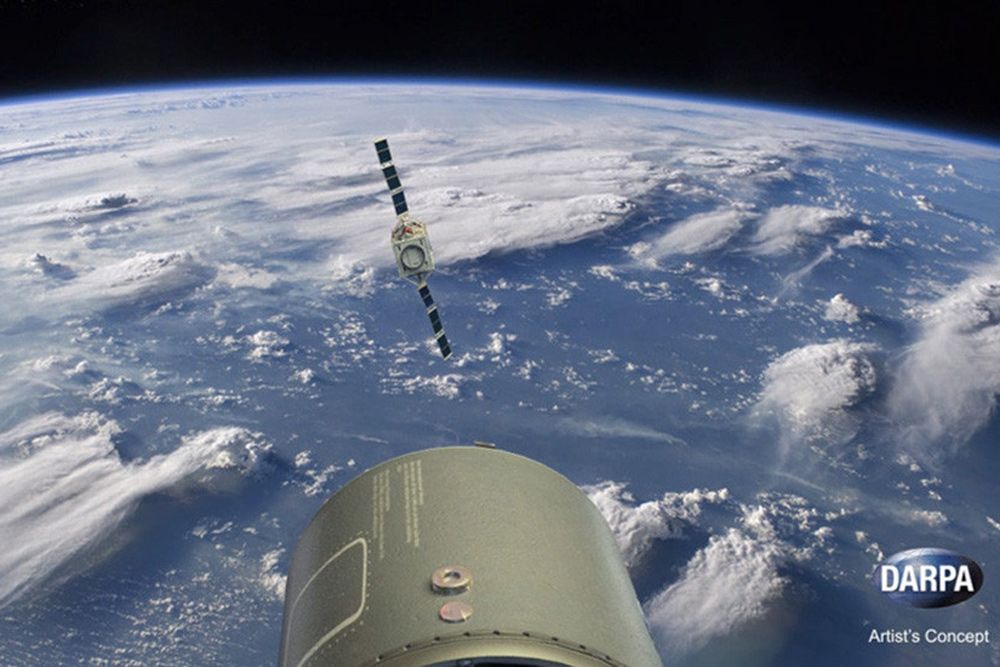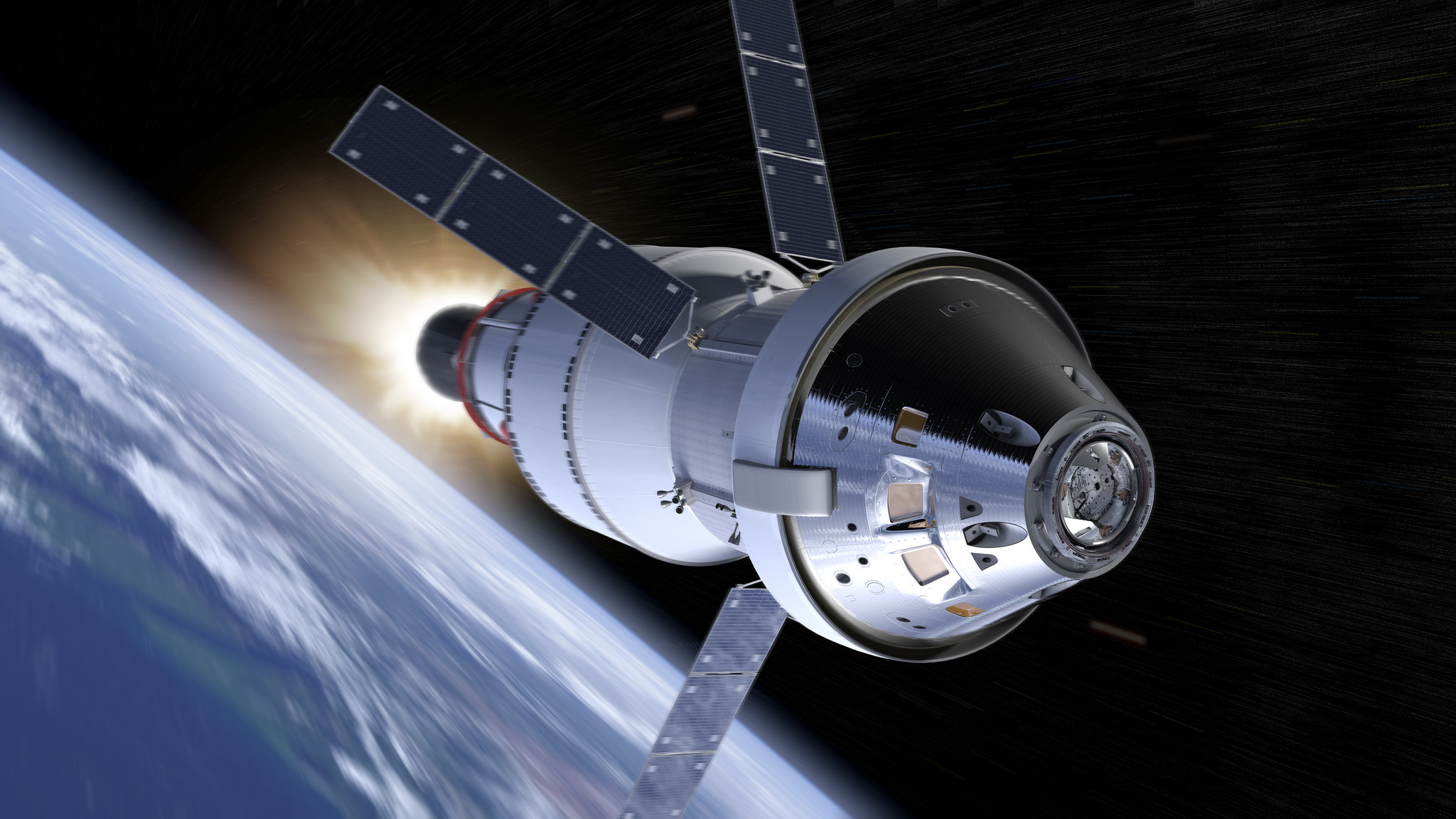DARPA Scraps Plan To Launch Small Sats from F-15 Fighter Jet

WASHINGTON – The U.S. Defense Advanced Research Projects Agency has scrapped plans to launch small satellites from a modified F-15 fighter jet after two tests of a new rocket fuel ended in explosions this year.
Instead DARPA will spend the next year studying how to harness the volatile nitrous oxide-acetylene propellant and, in parallel, modifications to existing small rockets that would enable the agency place small satellites on orbit on 24 hours notice at a cost of less than $1 million.
In March 2014, Boeing Defense Space and Security of Huntington Beach, California, won a contract potentially worth $104 million to build and demonstrate the Airborne Launch Assist Space Access (ALASA) system. The program was intended to demonstrate the capability to launch up to 45 kilograms of payload into low Earth orbit on short notice for as little as $1 million. [The Most Dangerous Space Weapons Concepts Ever]
ALASA is one of a number of DARPA efforts to reduce the cost and turnaround time for launching national security satellites.
Boeing's design featured a small expendable rocket launching from underneath a modified combat aircraft that would take off from a standard airport runway. Such a system would allow the Defense Department to launch from almost anywhere, DARPA said.
"The magic" in Boeing's design, as DARPA officials described it, was the powerful nitrous oxide-acetylene propellant, also known as NA-7. The propellant would be “pre-mixed” to reduce the plumbing needed on the rocket, enabling it to carry more payload.
Boeing led two subsystem tests in Promontory, Utah – one in August and one in April – aimed at learning how the pre-mixed propellant reacted to different temperatures, pressures and atmospheric conditions. In both tests, the propellant exploded.
Breaking space news, the latest updates on rocket launches, skywatching events and more!
"It did not go as predicted," Brad Tousley, director of DARPA's tactical technology office, said in a Nov. 23 interview.
The "finicky" nature of the propellant led DARPA officials to believe it is too risky to store on piloted aircraft, Tousley said.
As a result, DARPA has abandoned plans, described in the agency's 2016 budget request, to conduct as many as a dozen ALASA test flights during the upcoming year.
"From a performance standpoint it's still great but from a safety standpoint you have to work that out," Tousley said. "As of present, we've stopped planning for any launches."
The NA-7 propellant represents a classic problem for an agency whose mission is to pursue high-risk, high-payoff technologies for the Pentagon. These development efforts are taken on with the understanding that many, if not most, will fail.
Boeing, subcontractor Orbital ATK of Dulles, Virginia, and DARPA nonetheless plan to continue developing the technology. A third propellant test is imminent.
"We hope to make it work," said Pam Melroy, deputy director of DARPA's tactical technology office. "Is all the proper handling of this affordable, reasonable operationally, especially under a manned aircraft? Maybe it turns out it’s better suited for a ground-launch mission."
Additional tests also could help determine whether the propellant can be stored affordably, DARPA officials said.
Cheryl Sampson, a Boeing spokeswoman, said company executives were not available for an interview. In a Nov. 24 email, she said Boeing "has demonstrated and established procedures to mix, store, and transfer a significant amount of the nitrous oxide acetylene monopropellant safely and reliably. Each test in the plan assists us in gaining valuable information to assess the viability of the mix for use as a safe monopropellant."
DARPA has begun studying ways to apply ALASA technologies, including an autonomous flight termination system and improved ground-to-rocket communications, to its goal of fielding a launcher able to deploy small satellites for less than $1 million on 24 hours' notice.
One area to be examined is how DARPA might work with one or more of the companies that have emerged in recent years with plans to dramatically reduce the cost of launching small satellites.
"If the commercial small sat launch market can show rapid turnaround and affordable price points to orbit and we get a payload up on one of them, that might validate the goals of the program," Tousley said.
ALASA is the latest in a series of DARPA efforts to develop low-cost, responsive satellite launchers to run aground. Others include the Responsive Access Small Cargo Affordable Launch and Force Application and Launch from Continental United States programs, neither of which made it to flight testing.
The agency continues to fund the Experimental Spaceplane-1, or XS-1, program aimed at developing a reusable first stage for a small satellite launcher that would have an expendable upper stage. Boeing, Masten Space Systems and Northrop Grumman studying concepts under that program.
This story was provided by SpaceNews, dedicated to covering all aspects of the space industry.
Mike Gruss is a veteran defense reporter and Editor-in-Chief of Sightline Media Group, which includes Army Times, Air Force Times, Dense News, Military Times and Navy Times. From 2013 to 2016, Mike served as a Senior Staff Writer for SpaceNews covering national security space programs and military space policy in the U.S. Congress. Mike earned a bachelor's degree in English and American Studies from Miami University and has previously wrote for the Journal Gazette in Fort Wayne, Indiana and the Virginian-Pilot in Virginia before joining SpaceNews. Prior to joining Sightline in 2017, he was a senior editor of FedTech magazine covering technology in federal government. You can see Mike's latest project on Twitter.


